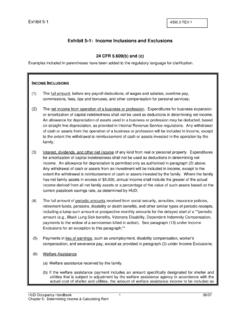Transcription of Early Grade Retention and Student Success
1 Early Grade Retention and Student Success Evidence from Los Angeles Jill S. Cannon Stephen Lipscomb with research support from Karina Jaquet Supported with funding from The William and Flora Hewlett Foundation iSTOCKPHOTO. Summary W. hen a Student fails to master academic material, educators face a range of choices . they can provide extra tutoring, place the Student in summer school, or, as a last resort, hold the Student back for a year. This last option Retention often proves to be a difficult and contentious issue for both schools and parents. In California, we cur- rently lack a clear picture of Retention : Who is retained?
2 How do retained students fare in the repeated year? And can Retention help struggling students reach proficiency? This report examines these questions by focusing on Early elementary school Retention in the Los Angeles Unified School District (LAUSD), which serves 11 percent of the public school students in the state. We find that percent of students in the district are retained before the third Grade . We also find that Retention rates vary across schools and even across schools with similar Student populations. Risk factors for Retention , in addition to poor academic performance, span a range of stu- dent characteristics.
3 We find that relatively younger students and boys are much more likely than other students to be held back, even when all else is equal. Other risk factors include low household income, English learner status, and Latino or African American race/ethnicity. Stu- dents with several of these risk factors can face up to a one-in-nine chance of being retained. Retention is a severe step, but it can benefit struggling students . We find that students retained in the first or second Grade can significantly improve their Grade -level skills during their repeated year. Gains in reading skills among students retained in the first Grade are w w 2 Early Grade Retention and Student Success significant and widely experienced.
4 Among those retained in the second Grade , the level of improvement in English language arts (ELA) and mathematics is also remarkable many students improve at least one proficiency level and a significant percentage attain proficient status, with larger shares in math (41%) than in ELA (18%). Our interviews with LAUSD principals show quite varied attitudes to Retention . Many acknowledge that it can have short-term benefits, but some remain concerned about long- term consequences. Our findings suggest that a blanket policy against Retention may be misguided. Of course, earlier interventions to prevent Retention are in the best interests of all of students and, because of costs, of school districts and the state.
5 In times of budget cuts, the intervention options available to a district or school may be severely constrained. Intervention costs fall more heavily on the district, which makes choices about where and how to use its funds to support at-risk students . But if a district or school cannot or does not provide adequate interventions to prevent Retention , Retention costs will fall largely on the state. Thus, policymakers at all levels have an interest in the range of Early educational interventions up to and including Retention . Please visit the report's publication page to find related resources: w w Early Grade Retention and Student Success 3.
6 Introduction academic improvement. In 1991, the California Depart- ment of Education recommended against Student reten- When educators encounter a Student struggling to master tion on the grounds that research did not support the academic material, they face a variety of options in how practice (George 1993). However, this recommendation to intervene, ranging from tutoring in a particular area conflicts with current state law, enacted by Assembly Bill of weakness, such as reading skills, to requiring that the (AB) 1626 in 1998, which requires that school districts Student remain in a Grade for an additional year.
7 Grade adopt a pupil promotion and Retention policy to identify Retention is generally considered a last-resort option, students in grades 2 through 8 who should be retained. assuming that other efforts to improve academic skills have failed to sufficiently prepare the Student to advance to the next Grade . In kindergarten and the first Grade , additional Grade Retention is generally considered concerns about developmental preparedness for example, behavioral skills can be a factor in Retention decisions. a last-resort option. The decision to retain a child for an additional year in the Early elementary grades is difficult and often conten- tious.
8 Proponents argue that Retention will provide low- The decision of whether or not to promote students should achieving students with extra time to acquire Grade -level be based on their grades, their proficiency levels on state- academic and social/behavioral skills before starting the wide assessments, and their performance on other aca- next Grade . They maintain that promoting children to the demic achievement indicators as determined by the school next Grade before they have mastered the requisite knowl- district, although teachers can recommend the promo- edge and skills sets them up for failure down the road.
9 Tion of students who are not performing at the minimum Opponents argue that Grade repetition does not signifi- AB 1626 does not cover other grades, such cantly increase academic achievement and may negatively as kindergarten and the first Grade , but school districts can affect children's social and emotional development by choose to include them. harming self-esteem, for example, thus raising the odds Because California does not collect statewide reten- that they will drop out of high school. The latter concerns tion data, we have chosen to examine the Retention data of seem to weigh more heavily than the potential benefits LAUSD, the largest school district in California, serving with many educators and parents, making them hesitant to about 11 percent of public school students in the state.
10 The take what they view as a drastic step Grade Retention . An district has a diverse Student population, including large additional concern is the cost to the state of an extra year numbers of English learner (EL) students and students of schooling for retained students . from low-income families groups generally perceived to Although the academic literature on Grade Retention is be at higher risk for Grade Retention . LAUSD also includes large, it does not provide a clear view of the policy's effec- a significant number of students from more-advantaged tiveness, particularly for Early Yet Grade repetition families, making comparisons across a range of stu- continues across the country, indicating that some educa- dent characteristics possible.











